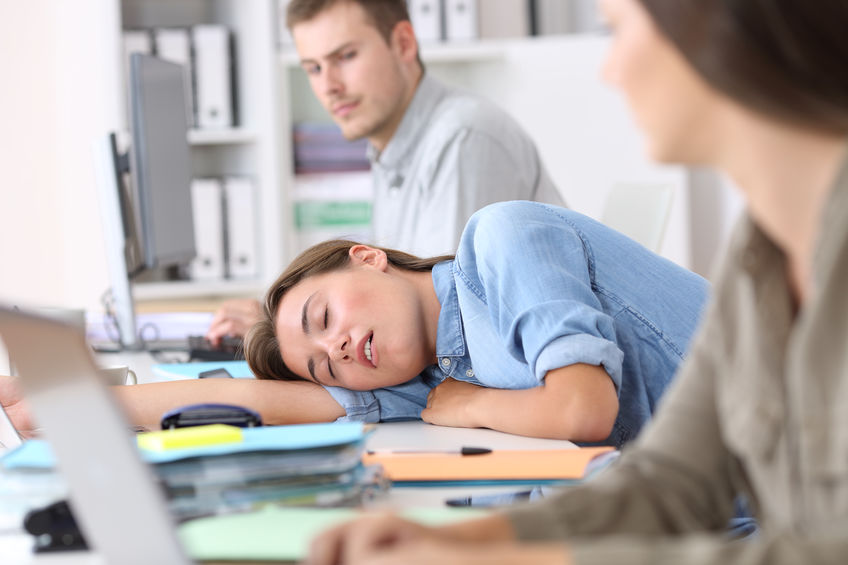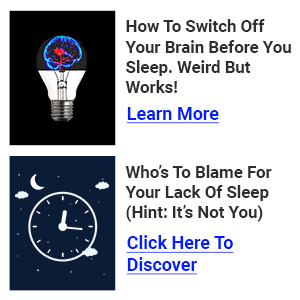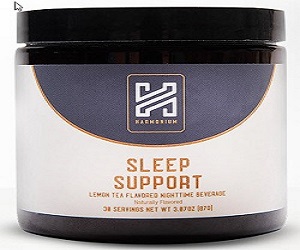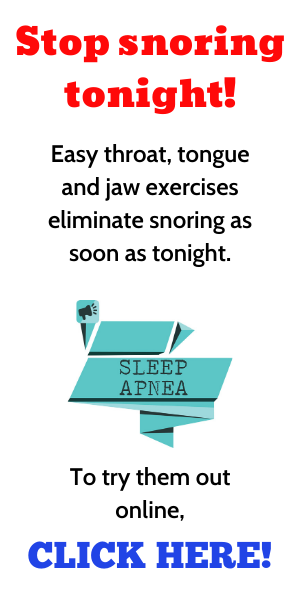The famous princess or “Sleeping Beauty” actually has a syndrome named after her and it’s classified as a rare sleeping disorder that not many are actually aware of. Learn about the disorder in this article.
Sleeping beauty syndrome is excessive sleeping. Some even sleep for 16 hours up to an entire day and it can go on uninterrupted. It is also when a person is experiencing excessive daytime sleepiness or hypersomnia.
This disease is also called “Kleine-Levin Syndrome” and is characterized by persistent episodic hypersomnia, along with some cognitive and mood changes.
Sleeping beauty syndrome is very rare, occurring at a rate of one in 1 million which is why research is limited into genetic factors.
The condition primarily affects adolescent males, though females can also be affected and the age of onset varies. There is no known cure, and there is not enough evidence supporting drug treatment.
People with sleeping beauty syndrome also experience excessive appetite or unusual cravings at random hours too. Patients, especially male, tend to experience hyper sexuality or increased libido caused by the syndrome.
Patients generally experience recurrent episodes of the condition for more than a decade and may return at a later age.
Individual episodes generally last more than a week, sometimes lasting for months.
The condition greatly affects the personal, professional, and social lives of sufferers. The severity of symptoms and the course of the syndrome vary between sufferers.
Patients commonly have about 20 episodes over about a decade. Several months generally elapse between episodes.
The sleeping beauty syndrome occurs at a much higher rate in Jews and in some families, it is likely that there is some genetic component in addition to environmental factors.
Diagnosis
Diagnosing the sleeping beauty syndrome can be spotted easily since the signs and symptoms are quite obvious, it is when the person falls into deep sleep for longer than the average hours of sleep that the body needs.
Genetic studies hold promise for understanding the disease, but they have yielded inconsistent results and there are only few patients available for testing.
But for proper diagnosis, there are certain methods that can help confirm whether the person is truly affected by the sleeping beauty syndrome or not.
The onset of the condition usually follows a viral infection; several different viruses have been observed to trigger the syndrome.
It is generally only diagnosed after similar conditions have been excluded.
Sometimes, it takes the average patients four years before receiving an accurate diagnosis causing undue suffering to patients and families.
- Methods for Diagnosing the Sleeping Beauty Syndrome:
- Magnetic resonance imaging (MRI)
- The MRI is a medical imaging technique used in radiology to form pictures of the anatomy and the physiological processes of the body.
MRI scanners use strong magnetic fields, magnetic field gradients, and radio waves to generate images of the organs in the body.
- The MRI is a medical imaging technique used in radiology to form pictures of the anatomy and the physiological processes of the body.
- Computed tomography scan (CT Scan)
- A CT scan makes use of computer processed combinations of many X-ray measurements taken from different angles to produce cross-sectional (tomographic) images (virtual “slices”) of specific areas of a scanned object, allowing the user to see inside the object without cutting.
- Lumbar Puncture
- Lumbar puncture, also called “Spinal tap” is a medical procedure in which a needle is inserted into the spinal canal, most commonly to collect cerebrospinal fluid for diagnostic testing.
The main reason for a lumbar puncture is to help diagnose diseases of the central nervous system, including the brain and spine.
- Lumbar puncture, also called “Spinal tap” is a medical procedure in which a needle is inserted into the spinal canal, most commonly to collect cerebrospinal fluid for diagnostic testing.
- Toxicology Test
- Toxicology test is the study of the adverse effects of chemical substances on living organisms and the practice of diagnosing and treating exposures to toxins and toxicants.
- Magnetic resonance imaging (MRI)
Since the syndrome is so rare or there are not enough medical reports that can support other diagnosing methods, people that suspect they might have the syndrome should definitely get diagnosed.
Causes
Until today, the cause behind the sleeping beauty syndrome is not known.
There are several mechanisms that have been proposed, but none has been confirmed.
One of the possible explanations so far is the hypothalamic or circadian dysfunction.
The thalamus is suspected to play a role in the uncontrollable sleeping with the syndrome itself.
The ability to sleep at night and be awake at day is deeply controlled by the internal body clock which is generated by the hypothalamus.
So if there is a chance that the thalamus is not functioning as it should, it may be causing or affecting the sleeping beauty syndrome.
(Related: “Non-24-Hour Sleep-Wake Syndrome“)
Patients with diencephalic-hypothalamic dysfunction caused by tumors tend to experience symptoms similar to those with the Kleine-Levin syndrome or sleeping beauty syndrome.
It is also believed that the medial temporal regions of the thalamus may be involved with the disease but examinations of patients with the sleeping beauty syndrome do not show consistent abnormalities around the area.
Another possible factor that contributes or causes the syndrome is the temporal lobe which can potentially create cognitive difficulties.
It is also mentioned that the apathy commonly shown by people with the sleeping beauty syndrome suggests that the condition may come with frontal lobe dysfunction.
Altogether, the involvement of the thalamus, temporal lobe and frontal lobe of the brain suggests that there is a multifocal, a localized encephalopathy.
There is also another possible explanation which concerns the serotonin and dopamine metabolism.
An imbalance in the neurotransmitter pathways of these chemicals could contribute to the sleeping beauty syndrome, potentially causing it or worsening it.
There is also the androgen, which might indirectly block melatonin receptors and possibly by mean of vasolidation, cause a cholinergic abnormality for some cases of sleeping beauty syndrome.
It is likely that there is some genetic component in addition to environmental factors.
Epilepsy and depression on the other hand, may be thought to cause the syndrome but was later proven to not be associated with the syndrome after all.
Symptoms
When present, symptoms of the sleeping beauty syndrome usually persist for days, weeks or even months, during which time all normal daily activities stop.
Individuals are not able to attend school, work or care for themselves. Most are bedridden, tired and uncommunicative even when awake.
- Symptoms of Sleeping Beauty Syndrome:
- Often “spaced out”
- After sleeping for so long, patients to be “spacing out” more often than usual
- Losing touch with reality
- People who sleep longer than the average or normal time tend to be “disconnected with reality” the moment they wake up, some lose their “sense of time” but recover later on
- Increased libido in males
- Though it is more common males, the same can happen to females affected by the syndrome
- Experiencing confusion
- Waking up after long hours of sleep can cause a person to feel confused, what more for those who sleep longer than they should?
It’s almost like they went for a short comatose, or was hibernating.
- Waking up after long hours of sleep can cause a person to feel confused, what more for those who sleep longer than they should?
- Decreased ability to focus
- Sleep deprivation can take away the ability to focus, but too much sleep can also do the same. It lowers the brain functionality.
- Lack of emotions (Apathy)
- It has been observed that people with the sleeping beauty syndrome tend to be completely emotionless, mostly when they just woke up from their deep slumber.
- Lack of energy (Lethargy)
- Complete lack of energy has also been seen in people with the sleeping beauty syndrome.
- Photophobia (Light sensitivity)
- After closing their eyes for such a long time, their eyes have become sensitive to light
- Hypersensitivity to noise
- Sleeping beauty syndrome is believed to completely shut off all sounds, making them sleep for 16 hours or longer without interruption.
This causes patients to become sensitive to noise once they awaken.
- Sleeping beauty syndrome is believed to completely shut off all sounds, making them sleep for 16 hours or longer without interruption.
- Sudden, unusual cravings (Compulsive Hyperphagia)
- Similar to animals that hibernate for a long time, they wake up feeling hungry.
Their body will be looking for the energy lost during the time they were sleeping.
However, with sleeping beauty syndrome, it also comes with unusual cravings.
- Similar to animals that hibernate for a long time, they wake up feeling hungry.
- Often “spaced out”
Affected patients may go for a period of weeks, months or even years without experiencing any symptoms, and then symptoms reappear with little to no warning at all, it can be so sudden.
In between episodes, those diagnosed with the sleeping beauty syndrome appear to be in perfect health with no evidence of behavioral or physical dysfunction.
They function daily with the terrible fear that they could become sick again at any moment.
Sleeping beauty syndrome episodes may continue to reoccur for a decade or longer with devastating effects on the adolescent’s life and family.
The “harmless looking” syndrome actually robs children and young adults of big pieces of their lives, one agonizing episode at a time.
Treatment
As of now, there is no known cure for the sleeping beauty syndrome but experts will never stop looking for answers to prevent the disease from taking away the precious time of those affected by the disease.
Lithium is the only drug that appears to have a preventive effect with the syndrome, but is not guaranteed to work for every patient.
In two studies of more than 100 patients, lithium helped prevent recurrence of symptoms in 20% to 40% of cases.
The recommended blood level of lithium for KLS patients is 0.8-1.2 mEq/ml. It is not known if other mood stabilizers have an effect on the condition.
Risks
Other than decreasing the quality of life itself, the sleeping beauty syndrome is being observed as it can affect many things that is still being studied by experts.
Mostly, it affects the heart and potentially affect blood pressure as well. It might also disrupt hormonal production as well as weaken physical abilities together with brain functionality.
Prognosis
The frequency of sleeping beauty syndrome episodes can vary from attacks one week in length occurring twice a year to dozens of episodes that follow each other in close succession.
About 80 percent of patients are adolescents when they first experience the sleeping beauty syndrome. However, for some occasions, its first occurrence comes in childhood or adulthood.
The median duration of sleeping beauty syndrome episodes is about ten days, but some last several weeks or months.
A study of 108 patients found an average of 19 episodes over the duration of the disease.
Another study also found a median of 3.5 months between episodes. Outside of episodes, there is no disturbance in a patient’s sleep patterns and they are generally asymptomatic.
Patients reportedly do not experience the same symptoms in each episode as well. Patients who initially have frequent attacks generally see the disease cease earlier than others.
The condition spontaneously resolves and the patient is considered to be cured if there have been no symptoms for six years.
Epidemiology
Population-based studies of the sleeping beauty syndrome have not been performed. Its prevalence is about 1 case per million people.
The sleeping beauty syndrome occurs most frequently among Jews in the US and Israel.
First-degree relatives of people who have suffered from the syndrome are much more likely than the general population to suffer from it, although only in about one percent of cases do family members contract it.
About 70 to 90 percent of patients are male.
Patients with the syndrome are more likely than the general population to have genetic disorders, and about a third of people with the syndrome encountered some form of birth difficulty.
One study found that about ten percent of patients had a neurological condition before the sleeping beauty syndrome developed.
History
Five patients with symptoms of persistent sleepiness were described in detail in 1925 by Willi Kleine, a neurologist from Frankfurt.
The report was followed four years later by details of a similar case by New York-based psychiatrist Max Levin.
In 1935, Levin published information about several more cases, including one described by Kleine.
Levin noted that some patients displayed an intense appetite in addition to their persistent tiredness. MacDonald Critchley, who first wrote about the condition in 1942.
It was MacDonald Critchley who named the condition “Kleine–Levin syndrome” and noted four common traits: hypersexuality, adolescent onset, spontaneous resolution, and compulsive eating.
He believed that the condition only affected males, but later studies showed some female patients
In the 1970s, several psychoanalytic and psychodynamic explanations for the condition were proposed. In 1980, a Hawaiian–Caucasian family was found in which nine family members suffered from the condition.
The first report dates way back in 1815 a report of a young man who showed excessive appetite and prolonged sleep after experiencing a fever. This could have been an early description of the condition.
Related Questions
Is Sleeping Beauty Syndrome Real?
Yes, sleeping beauty syndrome is real and it’s actually formally called as “Kleine-Levin Syndrome”.
It is a very rare condition which is why not many people may be aware of it, but it is real and can be destructive to a person’s lifestyle.
Is sleeping for 24 hours bad?
Yes, sleeping for 24 hours straight is bad for your health. Not getting enough sleep is bad for your health, but sleeping too much is also the same.
It can affect your heart and overall health which is why sleeping for the recommended six to eight hours is important.
Is it bad to wake someone up while sleepwalking?
Yes, it is actually bad to wake someone up who is sleepwalking.
There’s a high chance that the person who is sleepwalking may suffer from a shock that may lead to inflict pain upon themselves or the person around them.
Sleepwalking is still a mystery as of today, but nothing good has come out of waking someone who was sleepwalking so it is best to avoid waking them suddenly.
(Related: “Sleepwalking”)




